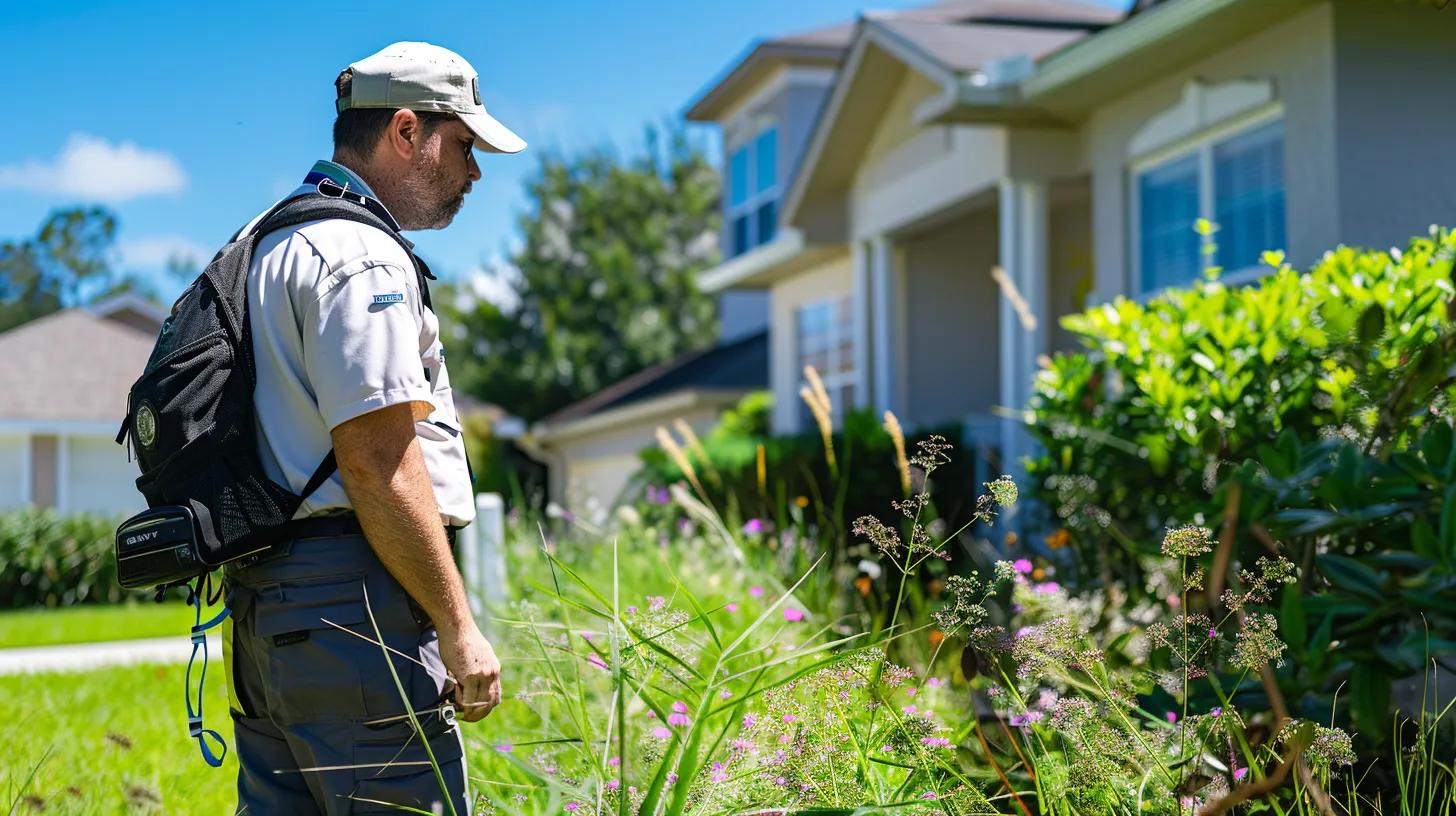Key Factors to Consider When Comparing Different Mosquito Prevention Plans From Various Companies
Introduction
Mosquitoes are more than just a nuisance—they transmit diseases such as dengue fever, malaria, Zika virus, and West Nile virus. In regions where these insects are prevalent, selecting the right mosquito prevention plan is critical for public health and a safe outdoor environment. Homeowners, businesses, and public institutions often face uncertainty when comparing the various pest control treatments available. With choices ranging from barrier treatments that create a chemical shield around properties to eco-friendly biological techniques, consumers need to understand each plan’s characteristics, supporting evidence, and cost structure.
This article provides a comprehensive guide on comparing mosquito prevention plans offered by different companies. It discusses typical services included, treatment schedules, chemical strategies addressing mosquito populations (with special attention to aedes aegypti), and cost implications based on treatment frequency and duration. The guide also addresses property-specific factors such as size and local mosquito density, environmental concerns affecting plan selection, and the pros and cons of eco-friendly alternatives versus traditional methods.
In addition, the article explains how to evaluate mosquito control companies based on credentials, customer service, and pricing transparency. Designed for those seeking effective vector control as recommended by organizations like the Centers for Disease Control and Prevention and the World Health Organization, this guide draws on evidence from randomized controlled trials and scientific research on pesticide efficacy. Ultimately, readers will learn how to compare various plans, understand their benefits and drawbacks, and make an informed decision on the best plan for both safety and cost.
This article now transitions into summarizing the key takeaways before delving into detailed considerations.
Key Takeaways
- Mosquito prevention plans differ in service scope, treatment frequency, and chemicals used, affecting overall efficacy.
- Property-specific factors such as size and local mosquito density play significant roles in plan selection.
- It is important to compare traditional chemical treatments with eco-friendly alternatives for sustainable control.
- Transparency in pricing, certifications, and service guarantees are critical when evaluating mosquito control companies.
What Should You Know About Different Types of Mosquito Prevention Plans?
Comparing mosquito prevention plans begins with understanding the range of treatment options and their benefits and limitations. Each plan is designed to control mosquito populations through integrated pest management strategies. Generally, plans include barrier treatments, larviciding, adulticiding, and sometimes digital inspection and follow-up. With evolving pest control treatments and eco-friendly alternatives, it is essential to compare plans based on scientific evidence, customer feedback, and cost benchmarks.
What Services Are Typically Included in Mosquito Prevention Plans?
Mosquito prevention plans typically include several key services to minimize mosquito populations and disrupt their breeding cycle: – Barrier Treatments: Application of residual insecticides to repel or eliminate mosquitoes upon contact. – Larviciding: Regular treatment of stagnant water to target larvae before they emerge as adults. – Adulticiding: Fogging or spraying treatments to reduce adult mosquito populations during peak activity. – Inspections and Follow-Ups: Assessments to identify high-risk areas and adjust treatments seasonally.
Combining these services provides a multi-layered approach addressing immediate threats and long-term control.
How Do Monthly, Seasonal, and Customized Plans Differ?
Monthly, seasonal, and customized plans vary mainly in application frequency and personalization: – Monthly Plans: Deliver consistent treatments needed in high-pressure areas, maintaining a continuous barrier. – Seasonal Plans: Concentrate treatments during peak mosquito activity (typically warmer months) and often reduce costs by limiting treatment periods. – Customized Plans: Tailor treatments based on property size, local mosquito pressure, and specific customer needs—for example, a large commercial property may require zonal treatments with scheduled inspections.
Each plan should be chosen using historical mosquito incidence data and local climatic conditions to ensure appropriate treatment frequency and duration.
What Are the Pros and Cons of Barrier Treatments, Larviciding, and Adulticiding?
Each technique has unique benefits and limitations: – Barrier Treatments: Offer long-lasting protection and are easy to apply; however, there is a risk of chemical resistance and environmental runoff. – Larviciding: Disrupts the mosquito life cycle by preventing larvae from maturing, though its efficacy depends on accurate identification of breeding sites. – Adulticiding: Provides immediate reduction of adult mosquitoes but only offers short-term relief and may require frequent repetition, with potential impacts on non-target insects.
Evaluating these factors helps in designing a balanced integrated pest management strategy.
Which Eco-Friendly Mosquito Control Options Are Available?
Eco-friendly options offer sustainable alternatives to traditional chemical treatments by focusing on biological and organic methods: – Organic Larvicides: Derived from natural organisms to target larvae. – Microbial Agents: Such as Bacillus thuringiensis israelensis (Bti), which specifically target mosquito larvae. – Plant-Based Repellents and Traps: That use carbon dioxide or light to capture adult mosquitoes.
Though these treatments may show a slower initial impact compared to synthetic chemicals, they are less toxic to humans, pets, and beneficial insects and support long-term environmental sustainability.
How Do You Assess Your Property and Mosquito Pressure Before Choosing a Plan?

Assessing property mosquito pressure is essential when selecting a prevention plan. This involves a detailed inspection of your property’s landscape, focusing on areas prone to mosquito breeding such as stagnant water, dense vegetation, and poorly maintained drainage. It is also important to consider local weather patterns, rainfall, and temperature fluctuations.
Key factors include: – Property Size: Larger properties may have multiple breeding sites that require a multi-zone approach. – Mosquito Density: High-density areas, often located in humid or tropical regions, require more frequent treatments. – Surrounding Environment: Proximity to wetlands or farms can increase mosquito populations.
A comprehensive evaluation ensures the selected plan is both effective and cost-efficient by matching treatment intensity with actual risk.
How Does Property Size Affect Mosquito Prevention Plan Selection?
The size of a property significantly influences the type and frequency of treatments required. Larger properties typically feature more potential breeding sites, necessitating a multi-zone approach involving both barrier treatments and targeted larviciding. In contrast, smaller properties may only require a few targeted applications. Additionally, a large property’s increased perimeter can elevate the risk of mosquito intrusion from neighboring areas, sometimes requiring community-wide control efforts.
What Role Does Mosquito Population Density Play in Plan Choice?
Mosquito population density is a crucial determinant of treatment efficacy. Areas with high mosquito densities require more frequent and combined preventive measures. In such areas, professionals may conduct baseline surveys using light traps or CO₂ baited traps to accurately gauge mosquito levels, allowing them to customize treatment frequency and ingredient concentrations appropriately. In lower-density areas, periodic seasonal treatments may be sufficient.
How Should Environmental Concerns Influence Your Decision?
Environmental factors play a key role in selecting a mosquito prevention plan. Heavy reliance on chemical insecticides can lead to resistance in mosquito populations and may harm beneficial species such as bees and butterflies. Modern plans increasingly incorporate eco-friendly and organic treatments that balance mosquito control with environmental stewardship. Choosing a plan with detailed monitoring and adaptive management practices helps minimize ecological risks, making it attractive for ecologically sensitive areas.
What Are the Key Differences Between Mosquito Control Methods?
Mosquito control methods vary based on the technology and chemical formulations employed. Common strategies include: – Spraying and Fogging: Target adult mosquitoes. – Larviciding: Focus on eliminating larvae. – Trapping: Capture adult mosquitoes to reduce reproduction. – Integrated Management: Combine multiple methods for synergistic effects.
Understanding each method’s specific advantages and limitations is critical to selecting the right approach for a particular property or region.
How Effective Are Spraying and Fogging Treatments?
Spraying and fogging are commonly used to quickly reduce adult mosquito populations. Typically employing pyrethroid insecticides like permethrin, these methods can reduce mosquito density by up to 70% immediately after application. However, the effects are short-lived (lasting only a few days) and may not address the larval stage, allowing populations to rebound. There is also concern about non-target effects and the potential development of resistance.
What Are the Benefits and Limitations of Mosquito Traps and Natural Methods?
Mosquito traps and natural methods offer a chemical-free approach: – Traps: Using attractants like CO₂ or specific light wavelengths, they capture adult mosquitoes to gradually reduce reproduction. – Natural Methods: Employ biological agents like Bti to inhibit larval development. These methods have minimal environmental impact and lower risk of resistance but can be less effective in high infestation areas unless integrated with other measures.
How Do Larvicides Work to Prevent Mosquito Breeding?
Larvicides target mosquito larvae in breeding sites such as stagnant water. Both chemical and biological formulations, including Bti, disrupt larval development, preventing maturation into biting adults. Studies have shown reductions in mosquito emergence by up to 80% under controlled conditions. Their targeted application minimizes non-target impacts but requires regular reapplication, especially after heavy rain.
Which Methods Are Best for Long-Term Mosquito Control?
Long-term control generally requires an integrated approach, combining: – Routine inspections – Targeted larviciding – Barrier treatments– Mosquito trapping Integrated methods have shown sustained reductions of up to 60% in mosquito populations over a season. A balanced approach using both eco-friendly and chemical treatments, when necessary, minimizes the risk of resistance while ensuring ongoing efficacy.
How Can You Evaluate Mosquito Control Companies Before Choosing a Plan?

Selecting a mosquito control company involves evaluating credentials, certifications, customer reviews, pricing transparency, and service guarantees. With a competitive pest control market, companies providing measurable and verifiable results tend to deliver long-term value.
What Credentials and Certifications Should a Mosquito Control Company Have?
A reputable company should have relevant state and local licenses along with certifications from bodies like the Environmental Protection Agency (EPA). Certifications in integrated pest management (IPM) and adherence to guidelines from the Centers for Disease Control and Prevention further attest to expertise. Training credentials and evidence of continuous product testing in accredited laboratories also reinforce trust.
How Important Are Customer Reviews and Testimonials?
Customer reviews and testimonials provide valuable insights into a company’s punctuality, treatment efficacy, customer service, and follow-up support. They help verify that the company has successfully reduced mosquito populations and can address issues promptly. Reviews from independent platforms and community groups also enhance credibility.
What Service Guarantees and Warranties Should You Expect?
Look for companies that offer clear service guarantees and warranties detailing outcomes if treatments fail. These may include follow-up treatments at no extra cost. Contracts should specify response times, reapplication procedures, and performance metrics such as targeted reductions in mosquito numbers. Transparent warranties indicate a company confident in its services.
How Transparent Should Pricing and Contract Terms Be?
Pricing should be transparent with detailed, itemized estimates covering all aspects of the treatment plan—whether on a per-treatment or seasonal basis. Contract terms must be clear, with explicit details on service duration, cancellation policies, and any additional charges. Upfront and flexible pricing structures build trust and help avoid unexpected costs.
What Are the Typical Costs and Pricing Structures for Mosquito Prevention Plans?
Costs for mosquito prevention plans vary based on treatment type, frequency, and property dimensions. Pricing generally falls into two models: – Per-Treatment Models: Charge a fixed fee per application, ideal for smaller or sporadic issues. – Seasonal Plans: Bundle multiple treatments over the mosquito season, often offering overall cost savings.
Additional services such as specialized inspections, targeted treatments in high-density areas, and eco-friendly enhancements may also influence pricing.
How Do Treatment Frequency and Plan Duration Affect Pricing?
More frequent treatments naturally involve higher labor and material costs. For example, a property with high mosquito pressure may require biweekly applications during peak months, increasing overall expenses compared to areas with moderate activity. Longer-duration plans that integrate comprehensive services tend to reduce the risk of mosquito rebound through economies of scale.
What Are Common Pricing Models: Per Treatment vs. Seasonal Plans?
In per-treatment pricing, each application is billed separately, providing flexibility but potentially resulting in higher cumulative costs if multiple treatments are necessary. Seasonal packages, which consolidate treatments into one contract, often simplify billing and offer savings through continuous and proactive management.
Are There Any Hidden Fees or Additional Charges to Watch For?
When evaluating pricing, be aware of potential additional charges. Some companies may add fees for emergency treatments, call-out services, or travel—especially if the property is in a remote area. Transparent companies disclose all potential fees upfront, so review proposals carefully and request an invoice breakdown to avoid surprises.
How Do Eco-Friendly Mosquito Prevention Plans Compare to Traditional Methods?

Eco-friendly mosquito prevention plans are designed to reduce environmental impact while maintaining effective mosquito control. They combine organic treatments, natural repellents, and biological controls to target both larvae and adults with minimal toxicity to non-target species.
What Organic and Biological Treatments Are Used in Eco-Friendly Plans?
Eco-friendly plans often use organically derived larvicides, plant-based repellents, and microbial agents such as Bti. These treatments, sometimes in combination with natural traps, reduce reliance on synthetic chemicals. They help disrupt the mosquito life cycle with little to no harmful residue, supporting overall ecosystem health.
How Effective Are Eco-Friendly Plans Compared to Chemical Treatments?
Although eco-friendly methods may have a slower initial impact compared to immediate chemical methods like fogging, studies indicate that with consistent application they can achieve population reductions comparable to chemical treatments (around 50–70% over a season). The long-term benefits include reduced chemical exposure and a lower risk of resistance development.
What Environmental Benefits Do Eco-Friendly Mosquito Control Plans Offer?
Eco-friendly plans reduce chemical runoff and protect water quality and biodiversity. They are less harmful to non-target species such as pollinators and help maintain natural predator populations, such as bats and certain bird species. Overall, these approaches support sustainable pest management and contribute to a healthier ecosystem.
Should You Choose DIY Mosquito Control or Professional Services?
Choosing between DIY mosquito control and professional services depends on factors such as infestation severity, expertise, and property complexity. DIY methods might be sufficient for minor infestations using over-the-counter products, but they often lack the precision required for thorough long-term control. Professional services provide tailored treatments backed by scientific expertise and specialized equipment, ensuring more reliable and sustained outcomes, especially in high-risk or complex environments.
What Are the Advantages and Disadvantages of DIY Mosquito Control?
DIY control offers convenience and lower upfront costs, giving homeowners flexibility in application timing. However, without professional assessment, DIY methods may miss critical breeding sites and often lead to inconsistent results. Moreover, improper chemical mixing and application could reduce efficacy and pose environmental hazards, making DIY approaches less suitable for severe infestations.
How Do Professional Services Provide Better Mosquito Prevention?
Professional services leverage scientific expertise and advanced diagnostic tools to conduct thorough property assessments. They design customized treatment plans that often include a combination of barrier treatments, larviciding, and adulticiding, scheduled according to local weather and mosquito behavior. Ongoing monitoring and follow-up visits further ensure that any resurgence is promptly managed. Backed by performance guarantees, these services provide a reliable, data-driven approach for long-term mosquito control.
How Do Costs Compare Between DIY and Professional Mosquito Control?
DIY options may involve lower initial costs but often incur higher cumulative expenses due to repeated applications and potential treatment errors. In contrast, professional services, though more expensive upfront, offer bundled seasonal packages, comprehensive follow-ups, and efficiency that can result in long-term savings by reducing both treatment frequency and associated health risks.
When Is It Best to Hire a Professional Mosquito Control Company?
Professional intervention is recommended when the infestation is severe, the property is large or complex, or when previous DIY efforts have been ineffective. Complex environments, such as those with diverse breeding sites or regulatory requirements for chemical application, are best managed by experts who can provide systematic treatments and guarantees for performance.
Detailed Lists of Mosquito Prevention Service Elements
Below is a detailed list of common service elements offered in comprehensive mosquito prevention plans, each explained briefly:
- Comprehensive Property Inspection – Thorough Analysis of Mosquito Breeding Sites A complete inspection identifies stagnant water, dense vegetation, clogged gutters, and hidden puddles. This step ensures tailored treatments are effectively applied by considering environmental factors such as shade and proximity to water bodies.
- Barrier Treatment Applications – Creating a Protective Chemical Shield These treatments apply residual insecticides to vegetation and surfaces, providing continuous protection for several weeks by repelling or killing mosquitoes on contact.
- Larviciding Programs – Targeting Mosquito Larvae at the Source Larviciding involves treating stagnant water sources with specific agents to prevent larvae from maturing into biting adults, thereby significantly reducing mosquito populations.
- Adulticiding Actions – Immediate Reduction of Adult Mosquitoes Methods such as fogging or misting deliver fast-acting chemicals to quickly lower adult mosquito numbers during peak activity times, offering rapid but short-term relief.
- Eco-Friendly and Organic Options – Safe Alternatives for Sensitive Areas These options use natural compounds, biological agents, and plant-based repellents that minimize environmental impact while effectively controlling mosquito populations.
- Pre-Treatment Water Source Modification – Preventing Mosquito Breeding from the Start Modifying water sources through drainage improvements or cleaning eliminates breeding opportunities and reduces reliance on chemical treatments.
- Follow-Up Monitoring and Reapplication – Ensuring Long-Term Effectiveness Regular follow-ups and monitoring help maintain low mosquito populations by adjusting treatments based on seasonal trends and newly identified breeding sites.
Detailed Comparative Table of Mosquito Prevention Methods
Below is a comparative table summarizing various mosquito control methods:
Before the table, note that many companies use an integrated pest management approach combining several of these methods.
How Do Eco-Friendly Mosquito Prevention Plans Compare to Traditional Methods?

Eco-friendly mosquito prevention plans combine traditional pest control with environmentally conscious methods. They emphasize organic and biological treatments to minimize adverse environmental impacts while effectively targeting mosquito larvae and adults.
What Organic and Biological Treatments Are Used in Eco-Friendly Plans?
These approaches use organic larvicides, plant-based repellents, and microbial agents like Bti to disrupt mosquito development without leaving harmful residues. Such treatments are sometimes combined with natural traps for a holistic, low-impact pest control method.
How Effective Are Eco-Friendly Plans Compared to Chemical Treatments?
While chemical treatments such as fogging may show an immediate reduction in mosquito numbers, eco-friendly plans achieve similar long-term reductions (typically 50–70% over a season) through continuous suppression of the breeding cycle. Their benefits include reduced chemical exposure and lower risk of resistance.
What Environmental Benefits Do Eco-Friendly Mosquito Control Plans Offer?
Eco-friendly methods reduce chemical runoff, enhance water quality, and protect non-target species such as pollinators. They help maintain natural predator populations and contribute to sustainable pest management, thereby creating a healthier overall ecosystem.
Should You Choose DIY Mosquito Control or Professional Services?
Deciding between DIY and professional mosquito control depends on infestation severity, technical expertise, and property complexity. DIY methods can offer immediate, inexpensive relief for minor problems but may lack the comprehensive precision needed for long-term control. Professional services provide tailored, scientifically backed treatments using specialized equipment and ongoing monitoring, making them ideal for severe or complex infestations.
What Are the Advantages and Disadvantages of DIY Mosquito Control?
DIY methods offer convenience and lower upfront costs, but they risk missing hidden breeding sites and may lead to inconsistent, less effective outcomes. Improper application can also harm the environment, making DIY less suitable for severe situations.
How Do Professional Services Provide Better Mosquito Prevention?
Professional services start with a detailed property assessment to identify high-risk areas and then implement customized treatment plans that combine barrier, larvicidal, and adulticidal methods. They use advanced tools and precise chemical doses, backed by ongoing monitoring and performance guarantees, thereby offering a more reliable, long-term solution.
How Do Costs Compare Between DIY and Professional Mosquito Control?
While DIY may seem cheaper initially, repeated treatments and potential misapplications can drive up overall costs. Professional services, though initially more expensive, often deliver better value through seasonal packages, fewer treatments, and reduced health or environmental risks.
When Is It Best to Hire a Professional Mosquito Control Company?
Professional mosquito control is best for severe infestations, large or complex properties, or when previous DIY efforts have failed. Properties near high-risk areas or with regulatory requirements benefit from expert treatment plans, which also offer performance guarantees and systematic follow-ups.
Frequently Asked Questions
Q: What should I consider when comparing mosquito prevention plans? A: Consider the types of treatments offered (barrier treatments, larviciding, adulticiding), their frequency and duration, and your property’s specifics such as size and local mosquito density. Evaluating the credibility, certifications, and customer reviews of service providers is also essential for long-term effectiveness.
Q: How does property size affect my mosquito prevention plan? A: Larger properties may have multiple breeding sites and require zonal or multi-phase treatments, often benefiting from professional assessments. Smaller properties may be managed with fewer, targeted applications that are both cost-effective and precise.
Q: Are eco-friendly mosquito prevention plans as effective as traditional chemical treatments? A: Eco-friendly plans, which use natural products like Bacillus thuringiensis israelensis and plant-based repellents, generally provide sustainable, long-term control with minimal environmental impact. While they may act more slowly initially, they can offer comparable efficacy when applied consistently.
Q: What are the typical costs associated with professional mosquito control services? A: Costs vary depending on the treatment type, frequency, and property complexity. Seasonal packages are common and often more cost-effective than per-treatment models, with transparent pricing and few hidden fees.
Q: When should I opt for professional mosquito control over DIY methods? A: Professional control is recommended for severe infestations, large or complex properties, or if DIY efforts have been ineffective. The comprehensive, customized approach provided by professionals often ensures better long-term outcomes and reduced health risks.
Final Thoughts
Mosquito prevention plans are critical for protecting health and enhancing outdoor living conditions. By comparing different plans based on service scope, treatment methods, environmental impact, and costs, property owners can make informed decisions that balance efficacy with safety. Whether choosing DIY solutions or engaging professional services, careful evaluation based on property-specific factors and company transparency is key to sustainable mosquito control. This comprehensive guide empowers consumers with the knowledge to select the most appropriate mosquito prevention plan for their unique needs.

17 Years of Pest Control Experience Founder and Owner of Dade Pest Solutions Proud Resident of South Florida
Shaun Judy, a dedicated South Florida native, is the founder and driving force behind Dade Pest Solutions. With over 17 years of hands-on experience in the pest control industry, Shaun has built a reputation for reliability, results, and real local knowledge. His journey began with a deep commitment to protecting homes from pests using proven methods and innovative solutions. Raised with a strong work ethic and a passion for service, Shaun treats every property as if it were his own—delivering expert care with a personal touch.

